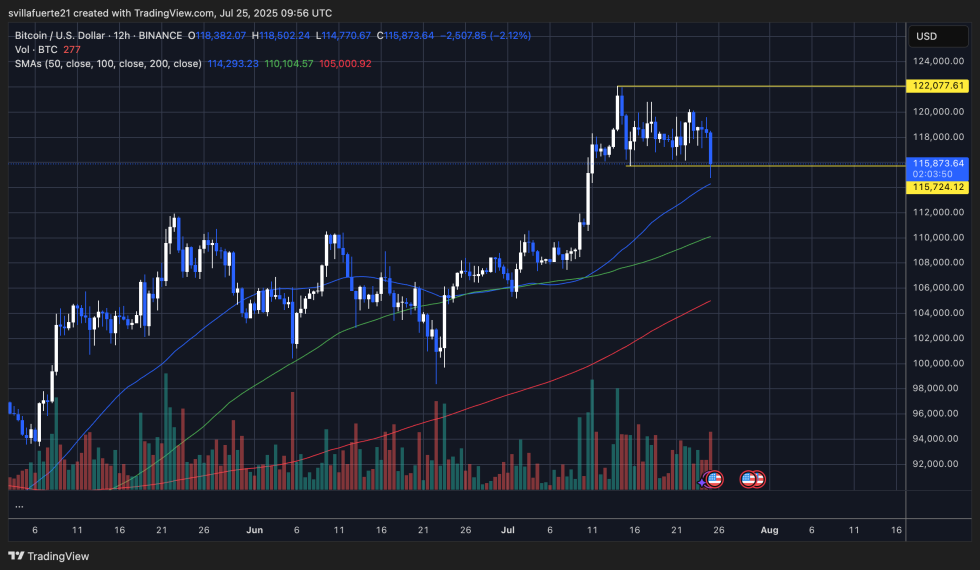Bitcoin is undergoing a notable pullback after trading within a tight consolidation range for the past two weeks. The price has dropped approximately 6% from its recent all-time high of $123,000, sparking increased volatility and growing debate among analysts. This correction, while still within historical norms, has prompted deeper reflections on market structure.
Amid the latest price action, CryptoQuant Founder and CEO Ki Young Ju made a striking statement, declaring that the traditional “Bitcoin Cycle theory is dead.” Ju admitted that his past predictions were rooted in this now-outdated framework — one that assumed whales accumulate BTC early in the cycle and sell as retail investors pile in. However, he noted that this pattern no longer reflects current market behavior.
The shift marks a maturing market, where spot ETFs, treasuries, and sovereign funds are playing a much larger role. As Bitcoin tests lower support levels, investors will be watching whether the asset continues to trade like a macro instrument — or reverts to its historical, more speculative patterns.
Bitcoin Enters a New Era as Institutional Holders Redefine Market Cycles
According to CryptoQuant CEO Ki Young Ju, Bitcoin’s current market dynamics represent a fundamental shift from previous cycles. In a recent post on X, Ju explained that during the last major cycle, whales sold into rising retail demand, marking the typical market top. This time, however, the pattern has reversed. “Old whales are selling to new long-term whales,” Ju wrote, pointing to the growing presence of institutional players with long investment horizons.
He noted that institutional adoption is far more significant than most believed. With the rise of spot Bitcoin ETFs, corporate treasuries, and sovereign interest, Bitcoin is evolving into a globally recognized macro asset. This shift is so profound that Ju admitted his previous call that the bull cycle was over was based on outdated assumptions. “I sincerely apologize if my prediction impacted your investment,” he posted. “I’ll be more careful with forecasts and focus on providing data-driven insights.”
Ju also remarked that trading Bitcoin now “feels pointless,” as the number of committed holders surpasses that of active traders. This transition to an institutional-led market introduces a new type of cycle — one characterized by stability, strategic accumulation, and long-term conviction.
For many investors and analysts, this change marks uncharted territory. It requires new frameworks for understanding Bitcoin’s value and trajectory. As Bitcoin matures into an accepted financial instrument, traditional cycle theories — rooted in retail-driven speculation — may no longer apply.
BTC Price Action Details
Bitcoin has broken below the tight two-week range between $120,800 and $115,700, signaling the start of a deeper correction. After reaching an all-time high near $123K, BTC failed to sustain momentum and retraced sharply, now hovering around the critical $115.8K level. This move coincides with growing volume and a close below the 50-period SMA (blue), indicating a potential shift in short-term trend.
Despite the drop, BTC remains above both the 100-period (green) and 200-period (red) SMAs, which are currently sitting at $110,104 and $105,000, respectively. These moving averages suggest that the broader bullish structure is intact, although the market is clearly under short-term pressure.
If BTC holds above $115,724 in the coming sessions, the move could be seen as a shakeout before another leg up. However, if bears push the price below this level with strong volume confirmation, further downside toward $112K–$110K is likely.
Featured image from Dall-E, chart from TradingView
